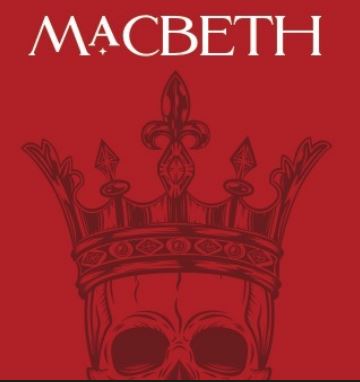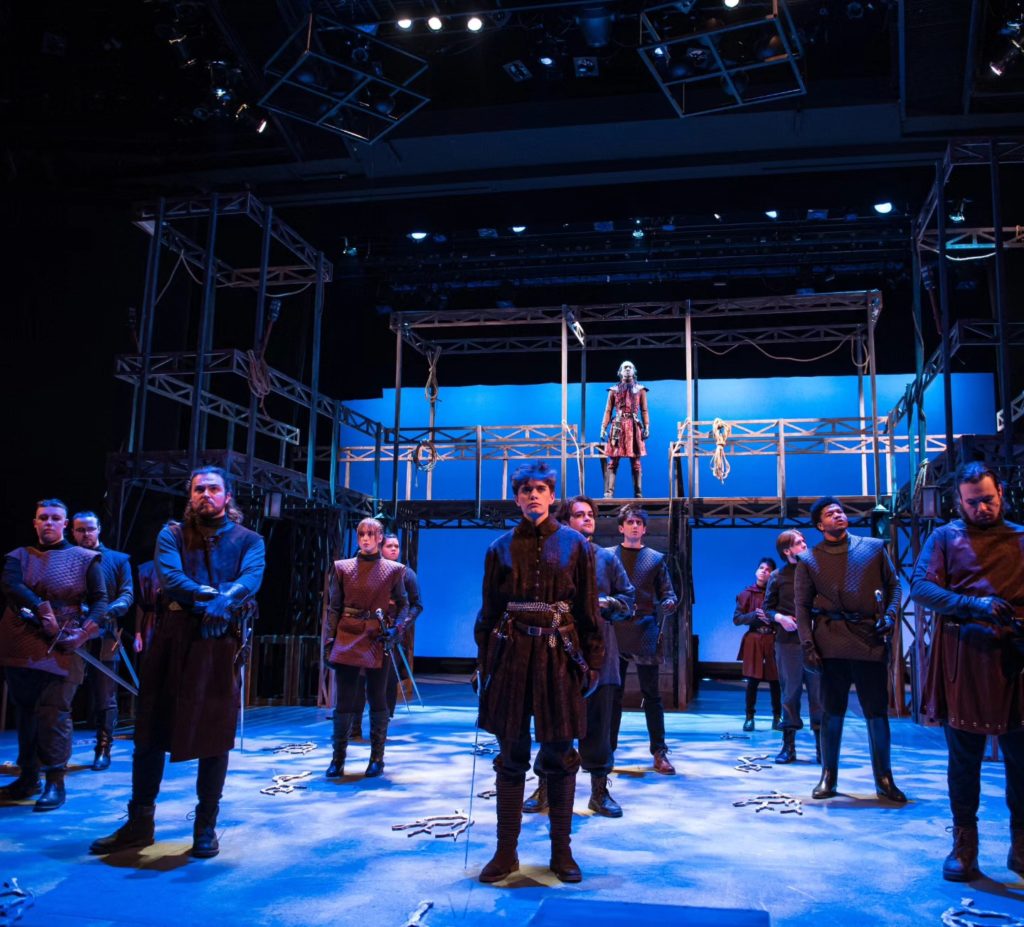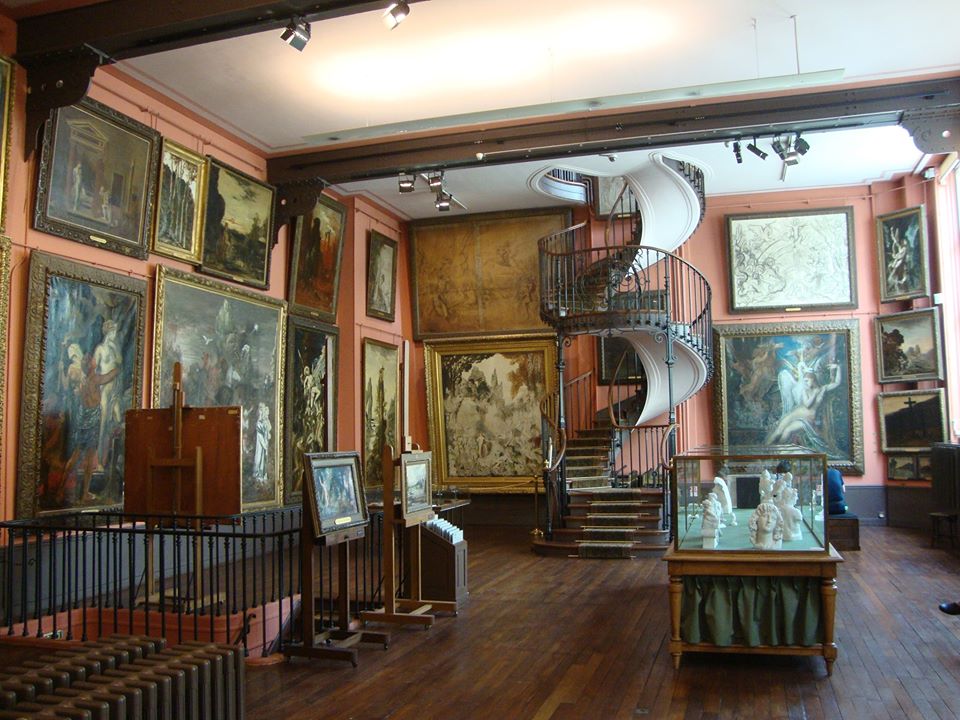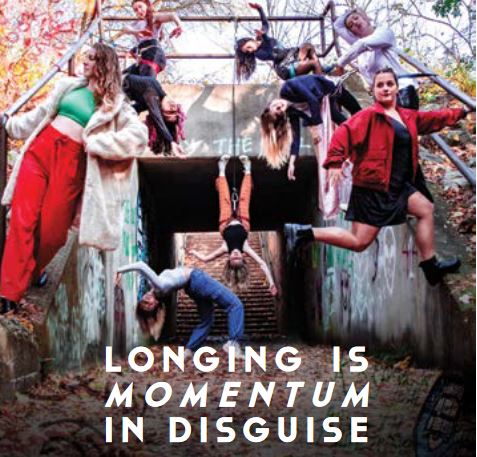
Director Bill Watson has pulled together an amazing cast and crew and has given Milwaukee a true vision of Shakespeare’s Macbeth. All of the sound and fury is here on UW-Milwaukee’s main stage theater…from the opening battles, to the murder(s) so foul, to the treasons and lies, to the final revenge that puts the world back in balance, Watson has contemplated them all and brings them to full fruition. It has been some time since I have seen this live on stage and it was amazing to experience a staging staying so close to the intent and feel that Shakespeare’s text has given it.
There are two Thane and Lady Macbeths during the run. When I attended, Tyler Stauffacher played Macbeth…eventually to the hilt…but with the swagger of the victor early on…to a doubtful traitor later on…and finally to a tyrant who wants to believe his own story rather than the events that are about to overwhelm him. Lady Macbeth was played by Andrea Bullar who cleanly exhibited the ambition for power required of the part. And she easily exhibited her sway over Macbeth and showed us how to push his buttons to accomplish her own goals. But Bullar was most effective as the maddening queen late in the play as she tries to wash away the sins from her hands.

And no I haven’t forgotten the three witches…here they are eerily represented by Destiny Faith, Maegen Mansfield, and Zulenny Rodriguez. They easily waft about the stage convincing us of their ethereal presence and then gone. And as effective but with a presence far more foreboding, Hecate is played by Jenna Blask. These spirits were simply remarkable here…
If you are reading this, you know that this play is quite complex and has a lot of moving parts. The timing here is exquisite. The fight scenes dramatic and threatening all at once although you know that this is just acting. The cast kept up the pace for the two hours plus…from partying to treason to the climactic battle. When entering the theater I was warned that there would be swords and there are swords, marvelous weighty middle-ages swords!

And the play moves quickly from location to location in Scotland, so a stage set for Macbeth needs to be versatile and clean but able to imply the different scenes. If you take a peek at the two photos included, you will see that scenic designer and the scenic staff made great use of a rustic looking balcony/parapet and allowed the theater’s thrust stage to serve any large scale purpose required. The feelings and tensions were also enhanced with dramatic lighting, occasional stage fog, and background sound effects…blood was implied by red cloth rather than spilling stage blood…the result here felt far more dramatic.
One quibble is with the sound. The three witches voices are being treated with some sort of reverb or echoplex. This effect certainly adds an appropriate eeriness to the proceedings…but at times, particularly during chorus recitations, it obscured the text. And given that Macbeth’s meetings with the witches are critical turning points in the story, clearly hearing the text is vitally important. One other time late in the play, the spoken text was also obscured: marching soldiers presented a dramatic effect but the sound of their boots also made the spoken word difficult to pick out.
Extra Credit Reading: Program/Playbill
This is a short single weekend run, so by the time I publish this there are only two performances left: this evening at 7:30 and tomorrow’s Sunday matinee at 2:00. Ticket information here.

